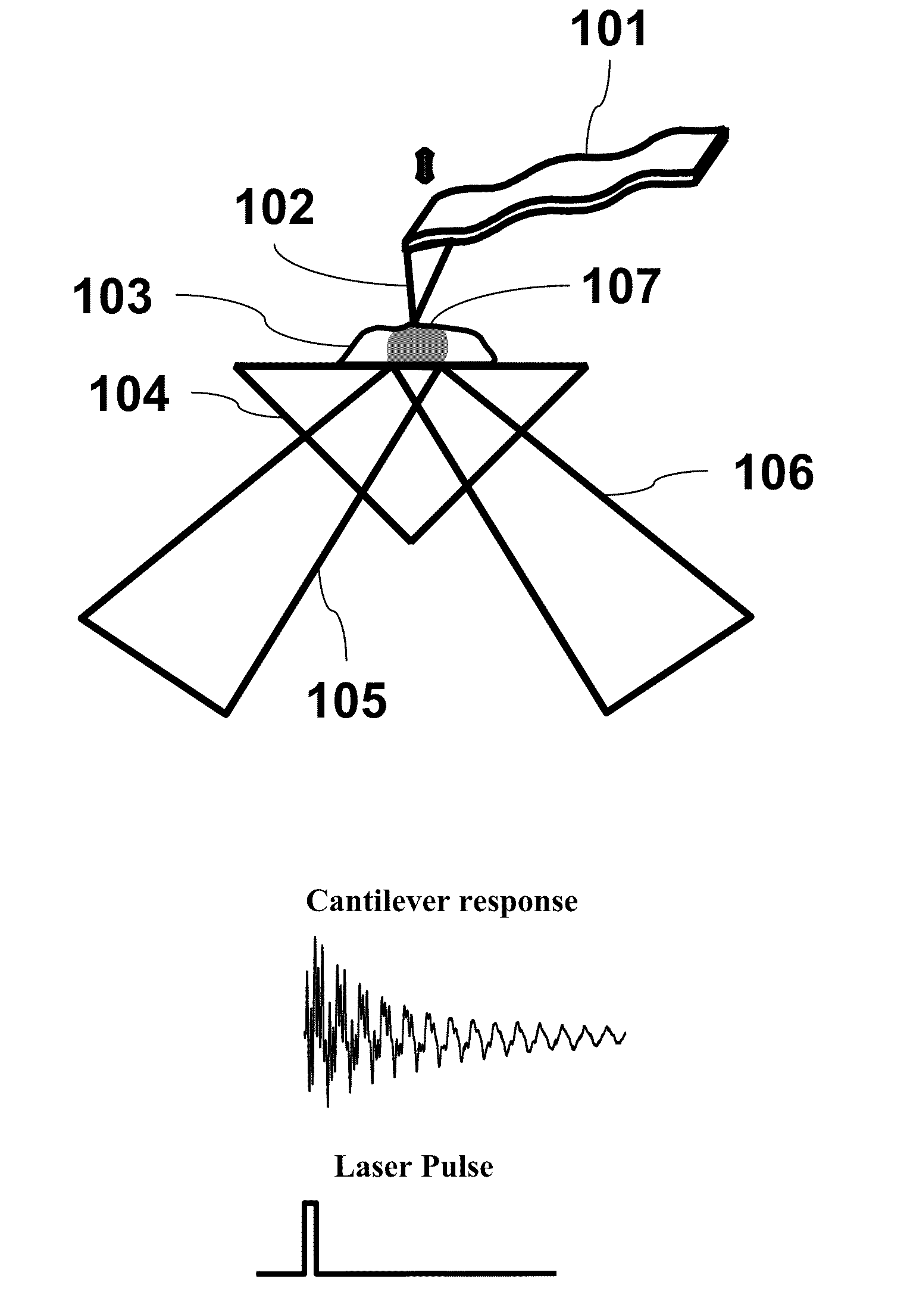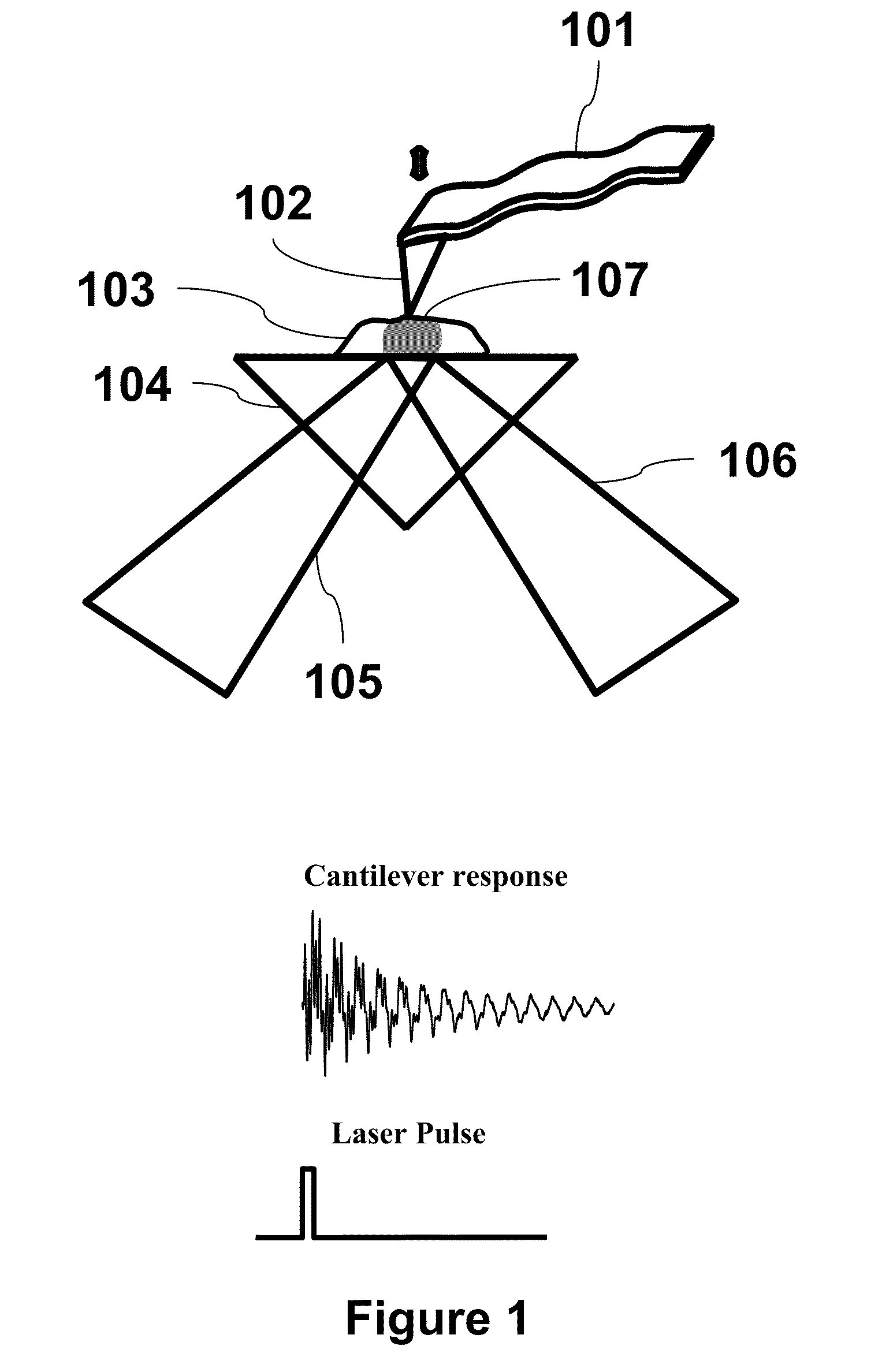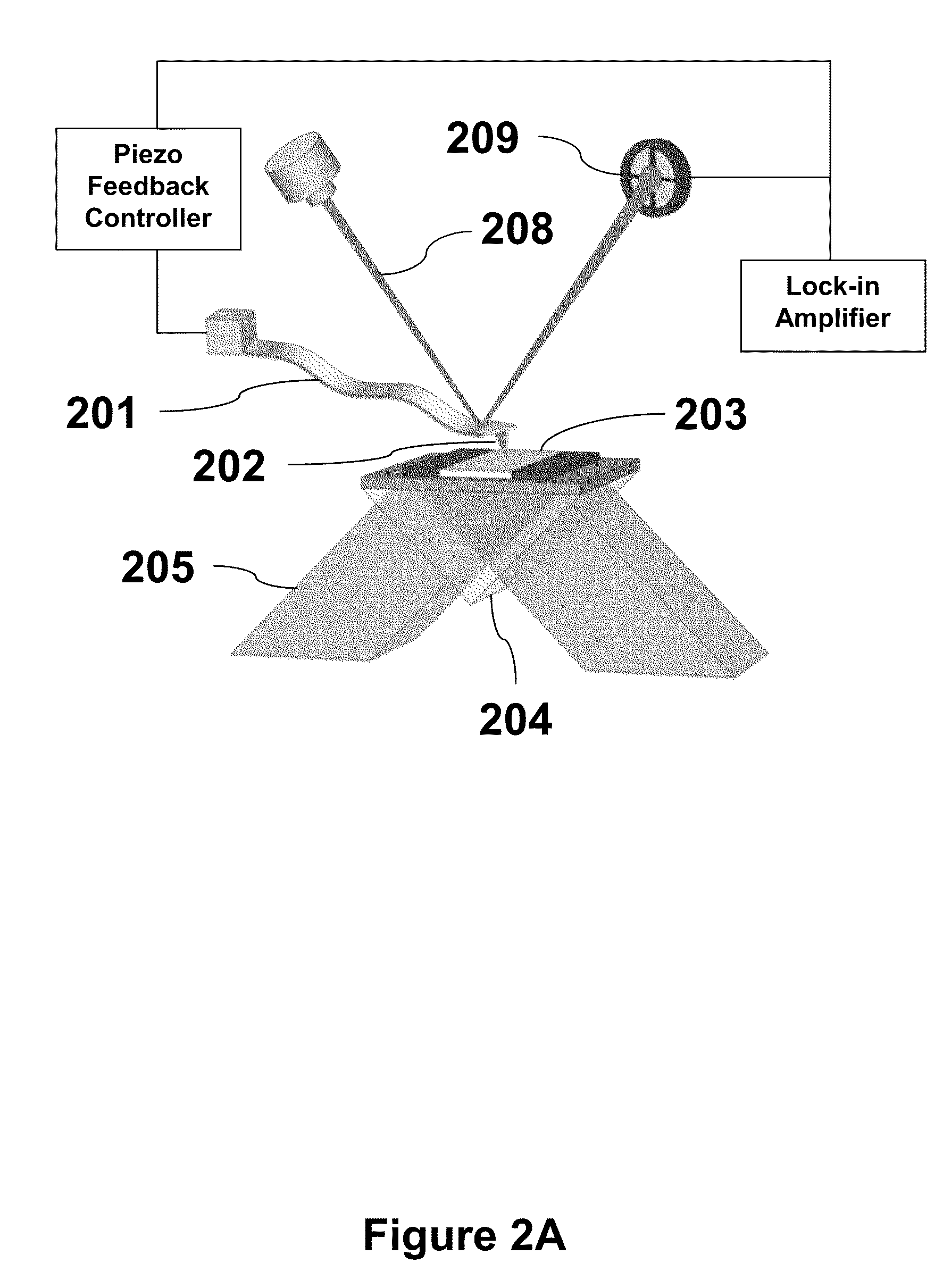Microcantilever with Reduced Second Harmonic While in Contact with a Surface and Nano Scale Infrared Spectrometer
a microcantilever and surface technology, applied in the field of microcantilevers, can solve problems such as the limited ability to characterize the chemical composition of samples
- Summary
- Abstract
- Description
- Claims
- Application Information
AI Technical Summary
Benefits of technology
Problems solved by technology
Method used
Image
Examples
example 1
Mechanical Design for Tailoring Resonance Harmonics of an Atomic Force Microscope Cantilever During Tip-Surface Contact
[0106]This example describes an atomic force microscope cantilever design for which the second flexural mode frequency is tailored relative to the first mode frequency, for operation in contact with a substrate. A freely-resonating paddle internal to the cantilever reduces the stiffness of the second flexural mode relative to the first while nearly maintaining the mass of the original cantilever. Finite element analysis is used to predict the performance of various cantilever designs and several cantilevers are fabricated and tested. This strategy allows the ratio of the first two resonant modes f2 / f1 to be controlled over the range 1.6-4.5. The ability to vary f2 / f1 improves a variety of dynamic contact-mode measurements.
[0107]Introduction. The tip of an atomic force microscope (AFM) can measure nanometer-scale surface features and materials properties. Many AFM te...
example 2
Infrared Absorbance Measurements Using Microcantilevers Having Free Resonators
[0131]Using an experimental setup shown in FIG. 2B, infrared absorption spectra were obtained for a polyethylene (PE) sample using three different microcantilever probes. FIG. 28 shows the infrared absorption spectrum obtained for each of the microcantilever probes: an unmodified cantilever (bottom), a single internal resonator (middle) and a single internal resonator with an opening (top).
[0132]FIG. 29 shows results of PE infrared absorption as measured by additional microcantilever embodiments, comparing spectra obtained with conventional (unmodified) AFM cantilever (dashed line) and a FIB cut probe. The modified probe has a spectral response almost 8× higher than the unmodified probe, and signal-to-noise ratio of 80 vs. 27 for the unmodified probe.
[0133]A horizontally layered nylon / polyethylene sample was prepared and used for surface absorbance mapping experiments. Absorption spectra were obtained as a...
PUM
 Login to View More
Login to View More Abstract
Description
Claims
Application Information
 Login to View More
Login to View More - R&D
- Intellectual Property
- Life Sciences
- Materials
- Tech Scout
- Unparalleled Data Quality
- Higher Quality Content
- 60% Fewer Hallucinations
Browse by: Latest US Patents, China's latest patents, Technical Efficacy Thesaurus, Application Domain, Technology Topic, Popular Technical Reports.
© 2025 PatSnap. All rights reserved.Legal|Privacy policy|Modern Slavery Act Transparency Statement|Sitemap|About US| Contact US: help@patsnap.com



